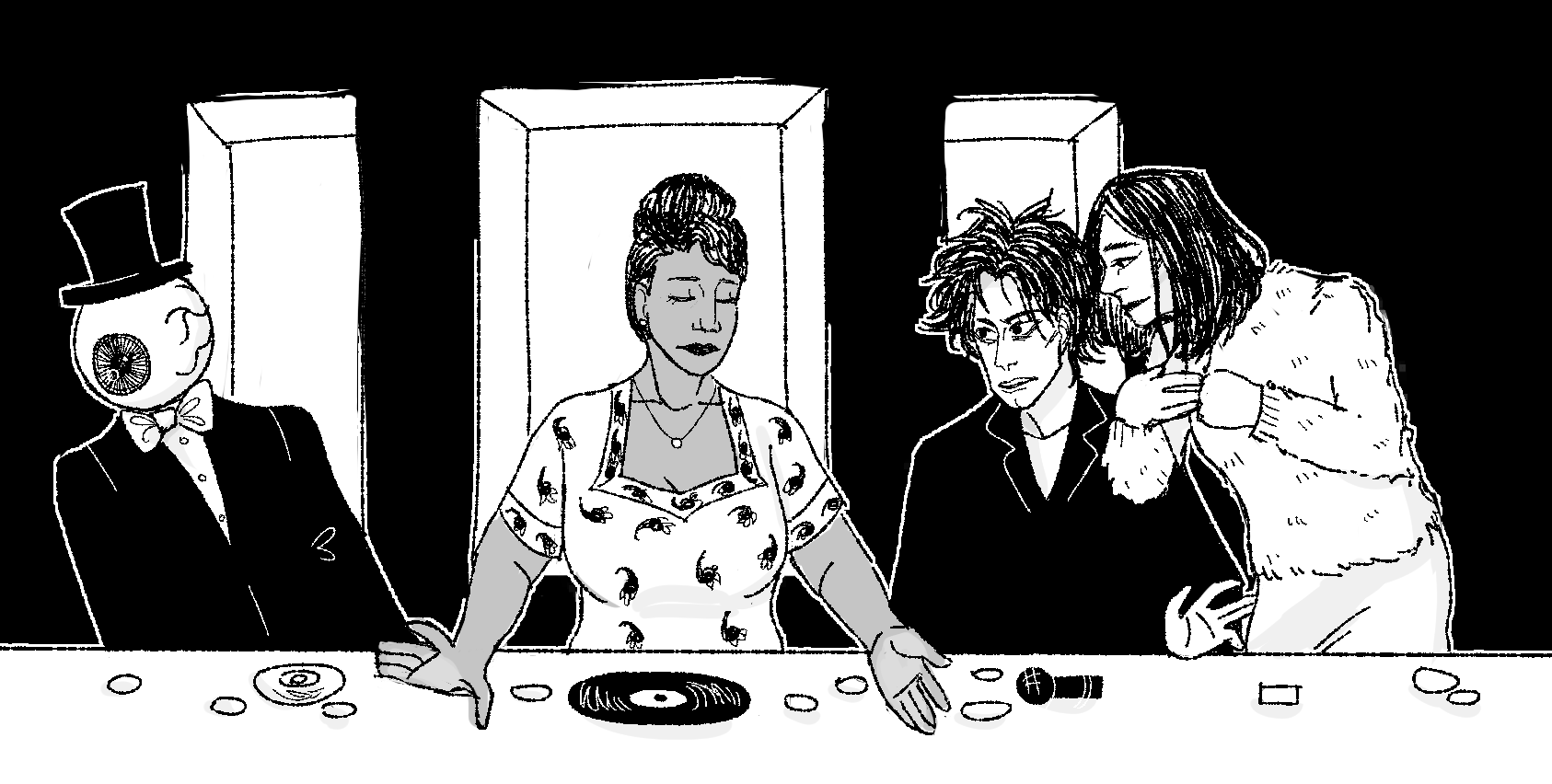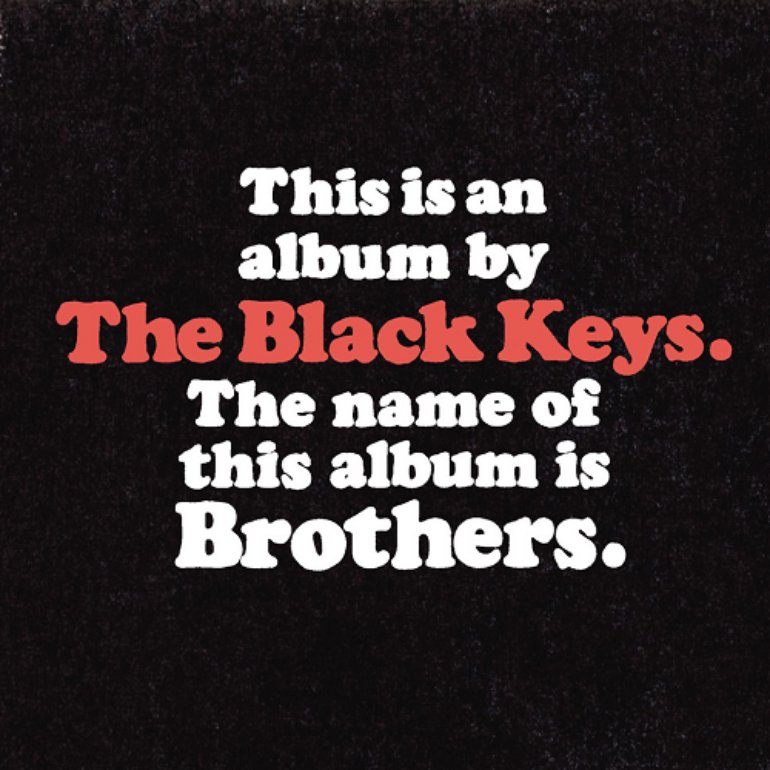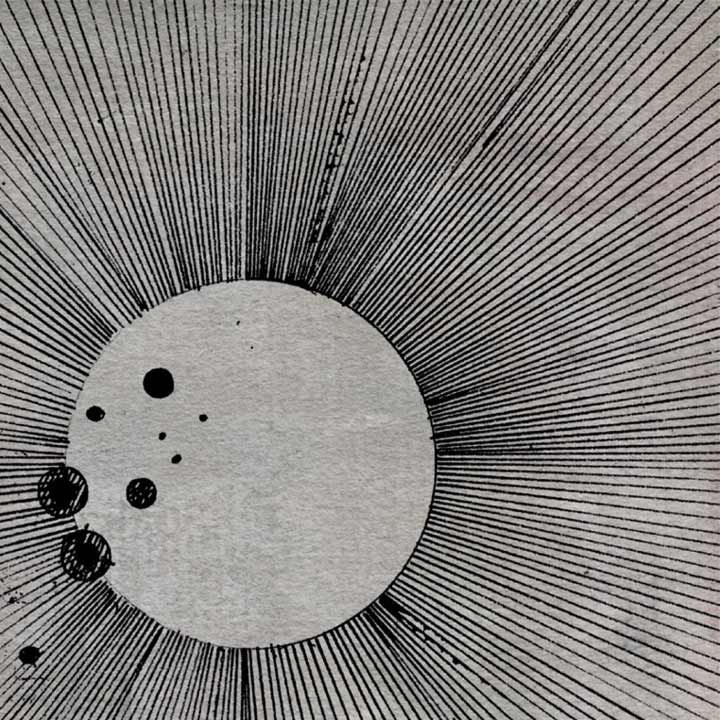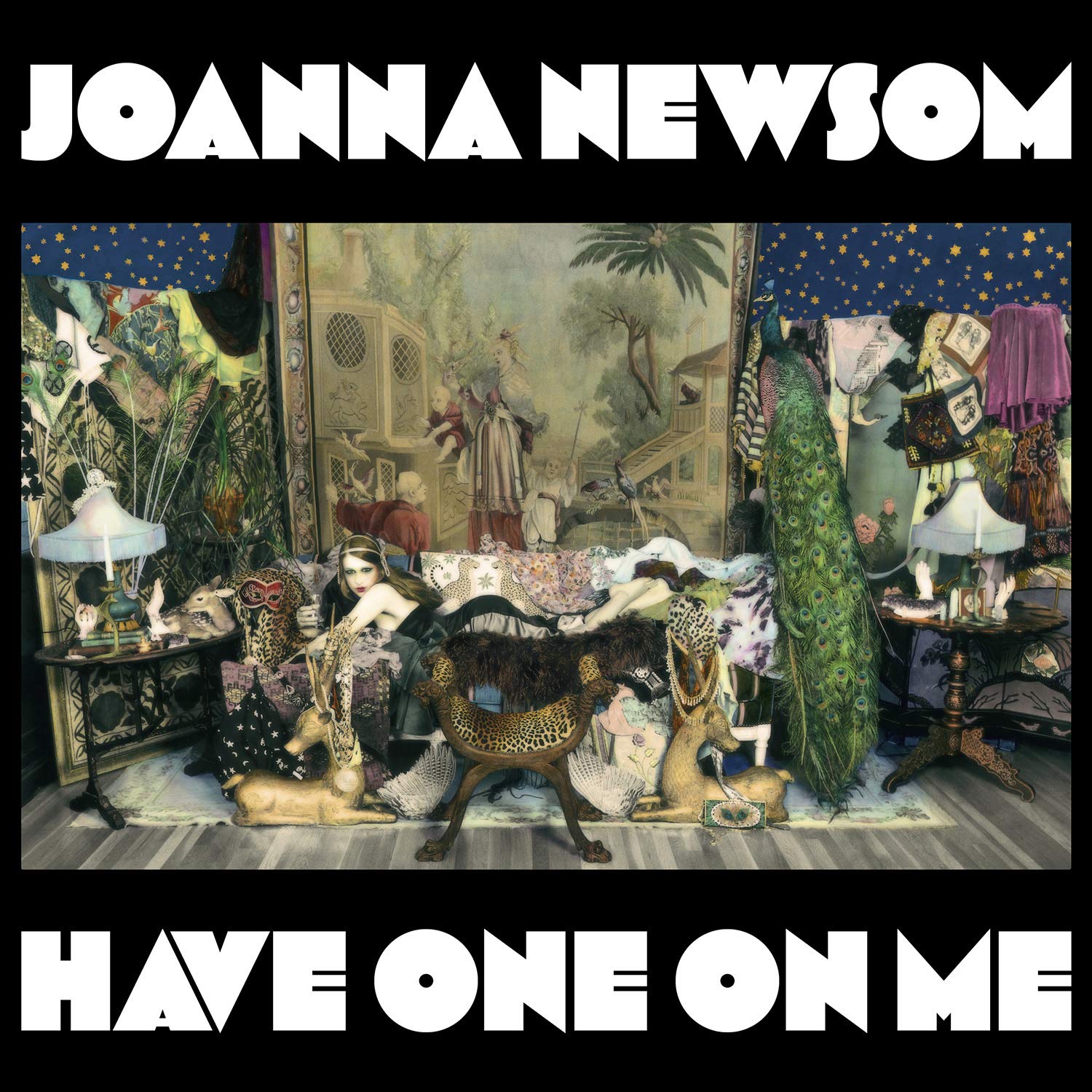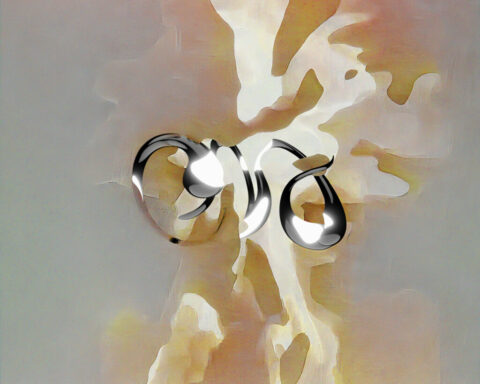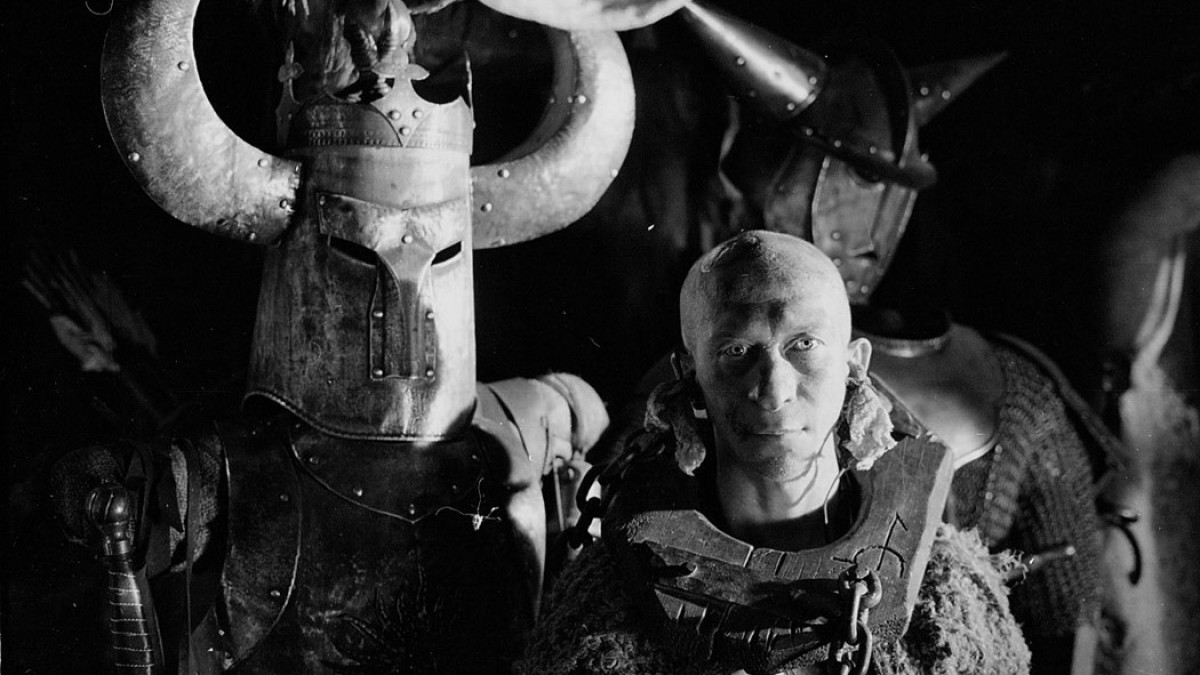Das Jahrzehnt neigt sich dem Ende zu und wir blicken zurück auf eine Vielzahl von großartigen Platten. Beginnend mit 2010, blicken wir quer durch alle Genres, von Kanye West über Flying Lotus bis zu Kvelertak.

Arcade Fire – The Suburbs (Merge, 2010)
The Suburbs ist ein Album, das Gegensätze in sich vereint. Trotz vieler genretypischer Elemente verfällt es nie in Klischees und vermeidet somit gekonnt, auf der Indie-Landfill zu enden. Die gewohnt schrummenden Riffs werden dabei ergänzt durch einprägsame Melodien („Ready to Start“; „Modern Man“; „We Used to Wait“) und bilden eine musikalische Basis für die großen und ambitionierten Arrangements, die auch schon auf Funeral (Merge, 2004) und Neon Bible (Merge, 2007) vertreten waren. Arcade Fire bauen noch öfter als bisher gigantische Walls of Sound, die trotz der Instrumentation nie schwammig klingen.
In gewohnter Manier fühlt sich The Suburbs aber dennoch nie abgehoben oder steril an. Es ist ein Album mit stadiontauglichen Hymnen, die trotzdem ihre Zugänglichkeit bewahren und geradezu intim wirken. Gleichzeitig ermöglicht die Produktion auch während der musikalisch dichtesten Momente („Empty Room“) die gesamte klangliche Palette wahrnehmen zu können – ohne dabei den organischen Sound der Band zu verlieren.
Arcade Fire haben mit The Suburbs sicherlich kein revolutionäres Album geliefert. Das muss es aber auch nicht sein – die Band schafft es hier, den eigenen Sound weiterzuentwickeln und in einem Genre herauszustechen, das zu oft in Eintönigkeit verfällt. The Suburbs zeugt von einem einzigartigen musikalischen Verständnis des Genres, in dem sich Arcade Fire bewegen: Nie ist es zu fremd oder überheblich, und nie verfällt es in zu gewohnte Muster.
– Tim
The Black Keys – Brothers (Nonesuch, 2010)
„This is an album by The Black Keys. The name is Brothers“. It is an freaking amazing album.
Dan Auerbach und Patrick Carney sind zwar keine Brüder, wahrscheinlich fühlt es sich nach sechs gemeinsamen Alben aber fast schon so an. Es klingt auf jeden Fall so, die beiden sind perfekt aufeinander eingespielt. Obwohl das Album mit 15 Songs fast eine Stunde auf die Platte bringt, will man nicht, dass es überhaupt aufhört und wünscht sich noch mindestens fünf Songs dazu. Mit dem sechsten Album beweisen The Black Keys wieder einmal ihre Virtuosität. Hier besinnen sie sich auf ihre Anfänge, zurück zu den Basics. Schlagzeug, Gesang und Gitarre als Grundlage, es wird selbst produziert. Einzig bei der Single ‚,Thighten Up’‘ wurde mit Danger Mouse, wie schon bei der Produktion des vorherigen Albums Attack & Release (Nonesuch, 2008), zusammengearbeitet.
The Black Keys wirken auf mich manchmal wie eine Band, die es ganz selbstverständlich und schon immer gegeben hat. Nie abweichend bleiben sie ihrem Sound treu, tun dies dafür unheimlich gut. Man bekommt das Gefühl, sie wären schon seit dem Anfang der Musikgeschichte dabei gewesen und hätten dirty Blues-based Rock miterfunden. Auch in Brothers tun sie, was sie immer getan haben, aber eben noch ein Stückchen besser als zuvor. Dafür wurden ihnen auch drei Grammys verliehen, verdienterweise, meiner Meinung nach.
Das herausstechendste Merkmal ihrer Musik, vor allem in diesem Album, ist die Emotion und Leidenschaft, die in jedem einzelnen der Songs zu hören und spüren ist. Die Texte sind durchgehend phänomenal. Eine willkommene Überraschung ist das Cover von Jerry Butlers ,,Never Gonna Give You Up“, das mir um Welten besser als das Original gefällt und auch zu meinen absoluten Favoriten des Albums gehört.
Manche der Songs brauchen ein bisschen Zeit um einem ans Herz zu wachsen, sind nicht so unmittelbar wie in ihren früheren Werken. Trotzdem verlässt einen schon nach dem ersten Hören das Gefühl nicht, dass dieses Album bereits bei der Veröffentlichung ein Klassiker ist.
– Magdalena
Flying Lotus – Cosmogramma (Warp, 2010)
Flying Lotus‘ third studio album Cosmogramma is a milestone in contemporary IDM and Electronica in which Steven Ellison – so his birth-name – effortlessly demonstrates his masterful craftsmanship in fusing the aformentioned genres with Glitch Hop, Instrumental Hip Hop, Nu Jazz and Wonky in an outstandingly natural and uncontrived manner, resulting in a stylistic trademark very much characteristic for the L.A.-based music producer.
One might assume, or even expect, a dismal grief-stricken release with Cosmogramma given the context around the album’s backround story. More precisely put, a pivotal event in Steven’s personal life that sits at this project’s origin – the passing of his, at that time, recently deceased mother to whom this album is devoted to (in the closing track ,,Galaxy in Janaki“, Steven samples his mother’s respirator while she was hospitalized). And yet in a peculiar way, despite these circumstances, the album counter-intuitively feels sonically colorful and vibrant; its glitchy futuristic soundscape creates a spacey, intergalactic, somehow other-worldly atmosphere, at times reminiscent of psychedelic and spiritual ecstasy.
Flying Lotus doesn’t withhold from showcasing his varied musical capabilities, making it all too understandable why he is perceived by critics and fans as a creative pioneer in his field: his artistic range reaching from straight-forward accessible, yet rich-in-experimentation and genre-blending, head-nodding beats („Zodiac Shit“; „Do the Astral Plane“; „Table Tennis“) to more reserved ethereal and primarily Jazz-grounded compositions („Arkestry“; „German Haircut“). A key component in regards to Lotus‘ artistic evolution was the incorporation of live instruments into his repertoire which he continued to utilize in forthcoming albums: harps, string arrangements, keyboards played by various accompanied musicians and, most prominently, bass guitar – tactfully handled by Thundercat who became from this point a frequent collaborator on FlyLo’s subsequent output and vice-versa – served to further compliment and elevate Steven’s already complex musical arsenal.
The album’s tracklist is, in the usual Flying Lotus formula, structured in a fashion where individual songs seamlessly transition into the next, therefore building a sense of reinforcement for one another. While realizing their own full potential, these tracks feel like smaller fragments of a grander extensive whole, amounting to a more cohesive and conceptual piece that is best experienced and unfolds itself to the fullest effect in a front-to-back undisruptive listening experience.
Cosmogramma perfectly exemplifies Flying Lotus‘ expertise in crafting complex, thrilling, dynamic and exhilarating musical compositions that morph a multitude of genres into an immaculate synthesis, while being devoid of restricted formulaic genre-conventions.
– Fatmir
Ghost – Opus Eponymus (Rise Above, 2010)
Bereits 2006 hat der ehemalige Repugnant Leadsinger Tobias Forge seine Fühler in eine musikalisch-theatralische Richtung gestreckt: Damals unter seinem echten Namen in der Formation Subvision. Das Power Pop-Quartett, welches mit dem bezeichnend betitelten So Far So Noir (Kooljunk Communications, 2006) bereits erste Ghost-Töne vorauswirft, bleibt weitgehend unbemerkt. Nicht, weil die präsentierte Musik besonders schlecht wäre, das Problem war eher, dass zig andere Projekte mit gleichem Können ausgestattet waren. Enter Ghost Demo 2010, die Geburt eines Konzepts: Theatralischer Mercyful Fate-Singsang, der gerade genug Biss aufweist, um den klischeehaften Opfere-Satan-zünde-Kirchen-an-Lyrics einen leicht augenzwinkernden Subtext zu verleihen, vorgetragen von einem pathosbeladenen Papstverschnitt; mysteriöse Maskierungen der inkognito Backing Band, die kollektiv schlichtweg als Nameless Ghouls bezeichnet werden; dazu exzellentes Songwriting verpackt in knackigen Drei-bis-Fünfminütern. Mehr benötigt ein Genius wie Forge nicht, um die wohl interessanteste und unterhaltsamste Pop-Rock-Metal-Band der 2010er zu schaffen und ganz nebenbei die erfolgreichste Popformel der Welt, nämlich die von ABBA, in ein fremdes Genre zu entführen und dabei unerhört erfolgreich zu sein (ob hinter den Satansbeschwörungen am Ende doch mehr steckt..?).
Das Erstlingswerk Opus Eponymus verhält sich da in Hinblick auf den gerade angesprochenen Popappeal noch recht zahm, denkt man etwa an die Queen-meets-Doom-Eskapaden auf Prequelle (Spinefarm, 2018). ,,Deus Dupla‘‘, als sakral anmutende Melodie, wirft seinen Schatten wie die Salems-Lot-Papa-Emeritus-Silhouette am Cover voraus, die ominös gespielte Orgel ist als Dauergast auf sämtlichen Releases zu hören. ,,Con Clavi Con Dio‘‘ schüttet dem geneigten Kultisten als Öffner die Zeilen ,,Lucifer / we are here / for your Praise / Evil One‘‘ wie Weihwasser ins Gesicht, damit auch der letzte Freizeitsatanist überreißt: Ernsthaftigkeit darf auf diesem Album nicht unbedingt erwartet werden. Großartige Songarrangements und erstklassig durchkomponierte Stücke dafür umso mehr. Während der Chorus in ,,Con Clavi’’ noch etwas sperrig und schwerfällig (aber nicht weniger brilliant) daherkommt, gibt es ab ,,Ritual‘‘, der (zumindest im Chorus) trügerisch fröhlichen Menschenopfer-Messe, kein Halten mehr. Inklusive der gerade angesprochenen Opferhymne bleibt zwischen der Transilvanien-Liebeshymne ,,Elisabeth‘‘, dem extrem groovigen Hexensabbat-Feuertanz ,,Stand By Him‘‘, sowie der Midtempo-Anrufung ,,Satanic Prayer‘‘ (believe in one god do we / Satan almighty) keine Zeit für Verschnaufpausen.
Und das instrumentale Herzstück, der Orgel-Synth, dudelt natürlich stets wie vom Poltergeist besessen vor sich hin, macht einen Melodiebogen nach dem anderen auf, unterstützt hier einen Riff oder stellt sich dort in Opposition zum Gesang – aber ist immer präzise und genau wo er hingehört. ,,Genesis‘‘ als instrumentaler Vierminuten-Closer offenbart dann noch ein letztes Mal, auf welchem Level Tobias Forges Kompositionen daherkommen (und greifen gleichzeitig vorweg, welches Prog-Potential eigentlich in diesem Projekt steckt – siehe ,,Spirit‘‘ und ,,Helvetesfönster‘‘). Die proggig anmutenden Synthwellen, die zunächst monoton den Unterboden für Riffvariationen bieten, lösen sich gegen Ende in akustische Gitarrenklänge auf, die wie die aufgehende Sonne über der Krypta (vergeblich) versuchen, den Spuk der letzten Nacht, der letzten 35 Minuten, zu vertreiben. Das ist mehr als Doom Metal, Occult Rock oder First Wave of Black Metal Revival. Das ist ABBA aus dem Mausoleum, eine verbotene Beschwörung aus archaischen Zeiten, Popmusik aus der Gruft, musikalische Geisterbahn auf höchstem Niveau.
– Gaps
Kvelertak – Kvelertak (Indie, 2010)
Kvelertak’s particular mix of Hardcore Punk, Classic Metal and Black Metal is unique and their name, which translates to „stranglehold“, is quite descriptive.
The album has four songs with features on them, one of the being Hoest of Taake. It was produced by Kurt Ballou, the guitarist of Converge. The cover art was made by John Dyer Baizley of Baroness.
The mostly Norwegian lyrics (the 5th song „Offernatt“ features english lyrics) give the album something nearly feral and rough. The album talks about Nordic gods, how bad Christianity is and the greatness of mead (is anyone really surprised about this?).
No matter how often one listens to the album, it does not get boring. The music quickly changes from fast paced Punk with Black Metal vocals to Rock & Roll riffs with blast beats on the drums. The songwriting is on point and the very different and prominent influences make it super interesting to hear over and over again.
– Anna O.
Joanna Newsom – Have One on Me (Drag City, 2010)
Joanna Newsom’s rich, idiosyncratic style deepens and flourishes on this epic of a triple album. Her ethereal vocals (that earned her many a Kate Bush comparison) are more present and prominent than ever before, the instrumentation shifting from bare harps and strings to swelling symphonic grandeur to blues-infused grooves and back again. Have one on me truly represents a milestone for Newsom as the moment she fully realized all of the songwriting potential she was hinting at on previous releases – its sheer beauty, scope and emotional range remains paralleled by very few. The lyrics are characteristically dense, archaic and packed with literary references – you might want to invest in a good dictionary before attempting to decipher what the exact narrative of these songs is. However, despite this surface-level inaccessibility, at their core the lyrics profoundly express some very familiar and universal emotional experiences, in Newsom’s own hyper-stylized way.
The two-hour journey from Easy to Does not suffice paints a complete narrative arc, where the narrator starts out excited for a budding love, insisting that her feelings for her lover are so strong that her staying by his side requires absolutely no conscious effort on his part (,,Honey, you please me/even in your sleep“), thus making the closing admission of “how easy [she] was not” even more devastating. In the interim, Newsom’s poetic range truly shines through, exploring grief, art, forgiveness, loss, childhood and innocence among other things in her meandering verses. She has a great knack for giving emotions and experiences she explores in song a different dimension, elevating them to stratospheric proportions by tying them in with great historical or religious events. Have one on me’s ambition pans out spectacularly. At once familiar and cozy and larger than life, its overwhelming beauty and accessible charm complimenting each other to make for one of the early 2010’s most memorable listening experiences.
– Kata
Kanye West – My Beautiful Dark Twisted Fantasy (Roc-A-Fella, 2010)
Chicago rapper and producer Kanye West needs little to no introduction. One could talk about his countless endeavours and controversies, but consecutively would face the problem of not knowing if those were rooted in actual personality traits or yet another thread in the fabric of the artistic figure that Ye’s public persona seems to be. Not that it really matters in the end, but Kanye fans and stans will find this argument all to familiar, while trying to defend a torn man that creates art in a way that few other people know how to do, while seemingly not being able to avoid even the smallest controversy.
But let’s talk about his artistic vision, that arguably reached its peak with the Hip Hop behemoth that 2010s My Beautiful Dark Twisted Fantasy is. Long gone are the days of soul chopping from the debut (The College Dropout (Roc-A-Fella, 2004) and Late Registration (Roc-A-Fella, 2005) respectively), the days of drunken haze that Graduation (Roc-A-Fella, 2007) accompanied, the mourns and cries of 808s (Roc-A-Fella, 2008). Here we have glamour, gloriousness, megalomania, and the eventual deconstruction and demise of all the glitter. Here we have the reflection of a Rock Opera of old, stripped from all the guitars, cheese and cheerfulness, elevated into the aether realms of chopped samples, orchestral arrangements and instrumental-like autotunes. This is the story of a megalomaniac – arguably an autobiographic statement – at the peak of his power, eventually facing the abyss of his own insignificance and uncertainty.
,,Can we get much higher?’’ is the provocation that larger-than-life opener ,,Dark Fantasy’’ throws in the listener’s face, only to get mirrored by a disillusioned ,,Lost in this plastic life’’ by the time the second to last song, the sober, but not less grandiose ,,Lost in the World’’ (featuring Bon Iver’s Justin Vernon) sounds from the speakers. ,,So Appalled’’, the particularly feature-heavy centrepiece of the record, sports lengthy lyrical contributions by Jay-Z, Pusha T and RZA, and displays extraordinarily well how Kanye knows to treat his guests: To give them the limelight and let them shine. Every feature (and there are plenty, ranging from the aforementioned RZA to Sir. Elton John), every instrumental arrangement is placed with care and knowledge. From the King Crimson-sample in ,,Power’’ over to the all-way-out-orchestra in ,,All Of The Lights’’ to the unlikely Black Sabbath ,,Paranoid’’-riff in ,,Hell Of A Life’’, there is not a single moment of boredom, only one ace after the other. This is music made by a maximalist for the glamorous dancehalls of a bright and colourful future on ecstasy yet to come.
– Gaps
